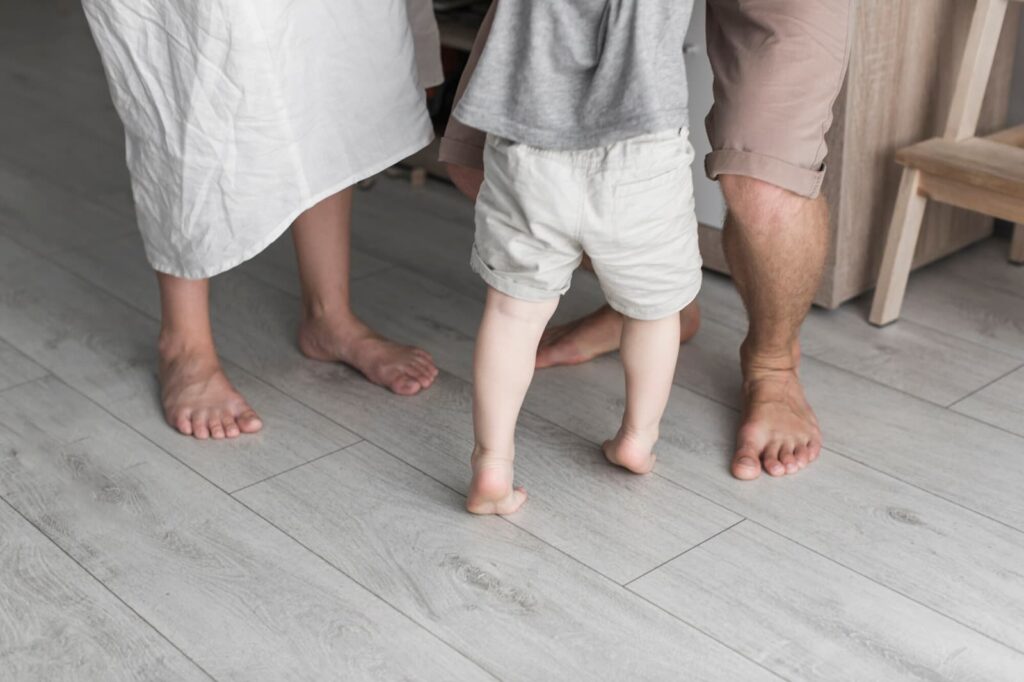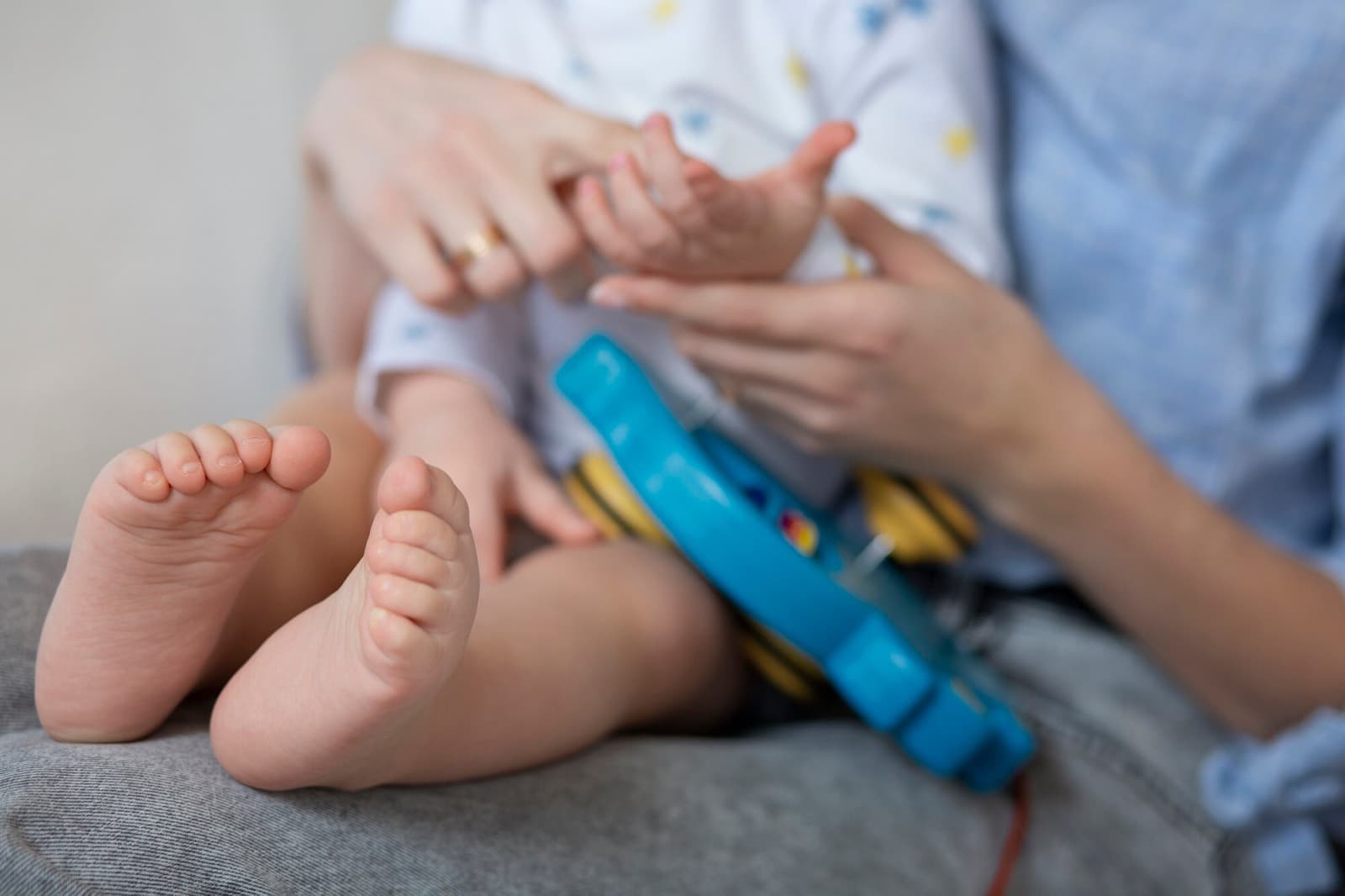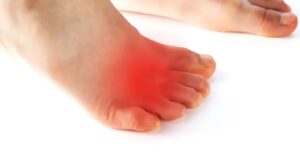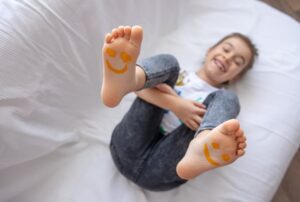Down syndrome, also known as trisomy 21, is a genetic condition caused by the presence of an additional copy of chromosome 21. This surplus genetic material is the source of the identifiable physical characteristics and health complications associated with Down syndrome.
Typically, people with Down syndrome are recognized by distinct physical traits such as reduced stature, an upward slant to the eyes, decreased muscular tonality, and a single crease across the palm. However, less commonly known is that this condition can also precipitate a variety of foot-related problems.
Key Questions Addressed in this Article:
- What are the common foot deformities experienced by individuals with Down syndrome?;
- How do foot issues impact mobility and overall well-being in individuals with Down syndrome?;
- What are the challenges related to shoe fitting for individuals with Down syndrome?;
- How are gait abnormalities influenced by Down syndrome and foot deformities?;
- What role does physical therapy play in addressing gait abnormalities in individuals with Down syndrome?;
- What orthotic management options are available to improve comfort and functionality for individuals with Down syndrome?;
- When are surgical interventions considered for severe foot deformities in individuals with Down syndrome?
Understanding Foot Challenges for Individuals with Down Syndrome
There are several common foot-related complications experienced by those with Down Syndrome, which can be broadly classified into three categories:
- Foot Abnormalities: The structure of the foot can showcase several anomalies, such as a widened forefoot, progressive bunions, claw toes, and hammer toes. Additional deformities may include webbing between the second and third toes, increased spacing between the first and second toes, loosened ligaments, and a flattened foot posture. These structural deviations can lead to other complications such as plantar fasciitis-induced heel pain and knee discomfort;
- Footwear Fitting Problems: The unique foot structure, characterized by broad and flat contours, can make it challenging to find appropriately fitting shoes. Recent studies identified that among a group of 48 children and adolescents with Down syndrome, nearly 62% were wearing shoes that were excessively long, while approximately 60% wore shoes that were too narrow. Incorrectly fitted footwear can exacerbate foot discomfort, cause skin irritations, and accelerate the progression of foot deformities;
- Skin Complications: Frequent skin issues include corns and calluses, excessive moisture between toes leading to skin damage, excessive dryness, thickened toenails, ingrown toenails, and fungal nail infections.
Furthermore, reduced muscle tonicity (hypotonia) may result in the feet and legs feeling fatigued and sore by the end of the day.
How Does Down Syndrome Affect Gait?
Altering the way a person walks, or their gait, is one of the significant challenges faced by individuals with Down Syndrome. Distinct characteristics of Down syndrome, such as a different foot shape and reduced muscle tone, significantly contribute to this.
Several other factors that directly influence their gait include a limited range of ankle movement, exaggerated hip flexion, and outward rotation, alongside a propensity for toe-walking. These elements can negatively affect their balance, potentially leading to a higher frequency of stumbling and falls due to foot-dragging during ambulation.

Down Syndrome Foot Issues: How Can They Be Managed?
We begin with a detailed assessment of the feet and legs, taking into account the daily life challenges and individual goals of the patient. Based on this information, we formulate a custom-tailored course of action, which may include:
- Routine Skin and Nail Maintenance: Regular appointments facilitate the management of corns, calluses, and thickened nails, significantly reducing discomfort. We also proactively address factors contributing to their rapid progression, putting preventive measures in place;
- Footwear Modifications and Recommendations: We pride ourselves on offering a variety of shoe modification options tailored to current symptoms and comfort levels. We also provide custom footwear and recommendations for wider and supportive shoes to accommodate mild foot changes;
- Custom Foot Orthotics: In light of the detailed assessment and 3D foot scan, we develop unique custom foot orthotics. These come with specific functions such as offloading painful areas and providing additional ankle support. They replace your shoe liner, offering superior comfort and support with every step. We prioritize selecting lightweight orthotic materials that don’t burden the feet, considering the lower muscle tone;
- Ankle-Foot Orthoses (AFO): In certain instances, custom AFOs may be used instead of foot orthoses. They provide similar benefits and extend above the ankle for enhanced stability, especially in cases of greater weakness;
- Surestep SMO: The Surestep supramalleolar orthoses (SMO) is an innovative solution for children with low muscle tone due to Down syndrome. When paired with suitable Surestep footwear, it can significantly enhance their mobility and independence;
- Ingrown Toenail Surgery: For recurrent and painful ingrown nails, a corrective surgery may be performed to permanently solve the problem;
- Injury Management: Owing to the increased risk of injuries in Down Syndrome, we manage issues such as heel pain using our proven protocols, factoring in the unique circumstances of each individual.
Conclusion
In conclusion, understanding the unique foot challenges faced by individuals with Down syndrome, including conditions like Morton’s Neuroma, is essential for providing comprehensive care and improving quality of life. By addressing foot deformities, shoe fitting issues, and gait abnormalities through a multidisciplinary approach encompassing orthotic management, physical therapy, and surgical interventions when necessary, healthcare professionals can optimize outcomes and enhance mobility for individuals with Down syndrome. Through tailored treatment strategies and ongoing support, it is possible to mitigate the impact of foot issues and empower individuals with Down syndrome to lead active and fulfilling lives.


